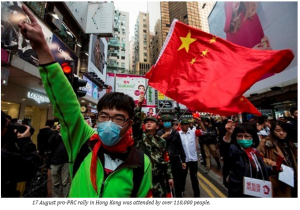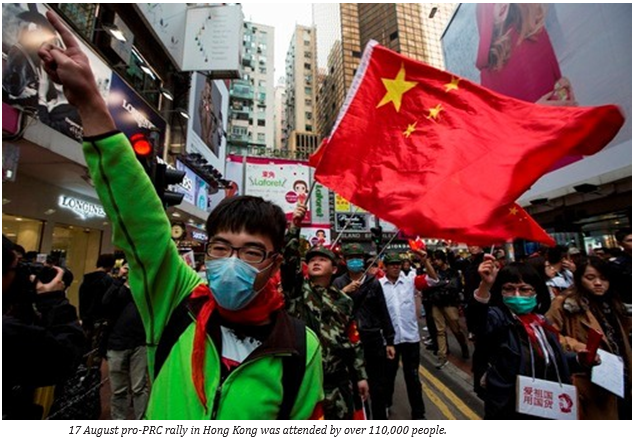
GREETINGS FOR THE OCTOBER 1 ANNIVERSARY OF CHINA’S GREAT 1949 REVOLUTION DOWN WITH YUPPY, ANTI-COMMUNIST HONG KONG PROTESTS
1 October 2014: Today in Hong Kong, the Western media are playing up the anti-PRC, anti-communist protests. The protests are indeed large but the Western media ignored a huge pro-PRC rally in Hong Kong just weeks ago. The main trade union federation, the Hong Kong Federation of Trade Unions, is pro-PRC. The parliamentary party with the biggest vote in Hong Kong is the pro-PRC, Democratic Alliance for the Betterment of Hong Kong. It was formed by pro-communist people and leaders of the Hong Kong Federation of Trade Unions.
Hong Kong was stolen from China by the British in the 1840s as part of the Treaty of Nanking. That followed China’s defeat in the Opium War. The humiliating treaty for China allowed Westerners in China to have “extraterritoriality” meaning that they were not subject to Chinese laws.
Under British rule, Hong Kong people had no democracy whatsoever. They were simply subjects of Britain ruled by the Continue reading OCTOBER 1 ANNIVERSARY OF CHINA’S GREAT 1949 REVOLUTION
